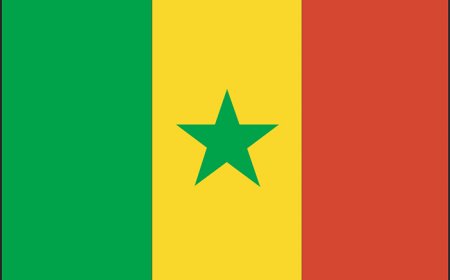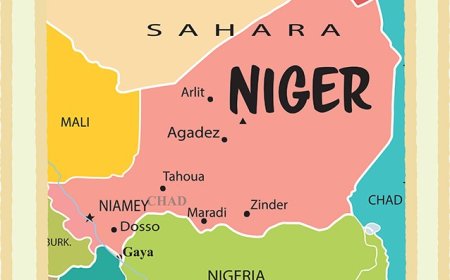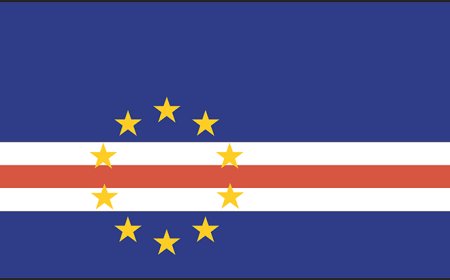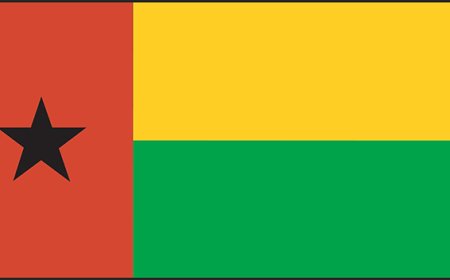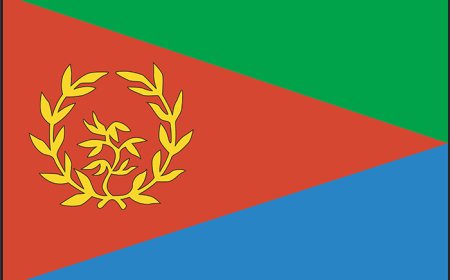Guinea for Students: Geography, History, and Culture of a West African Nation
Learn about Guinea’s rivers, people, and rich culture in this educational article for students. Includes geography, vocabulary, and 8-question quiz with national standards.
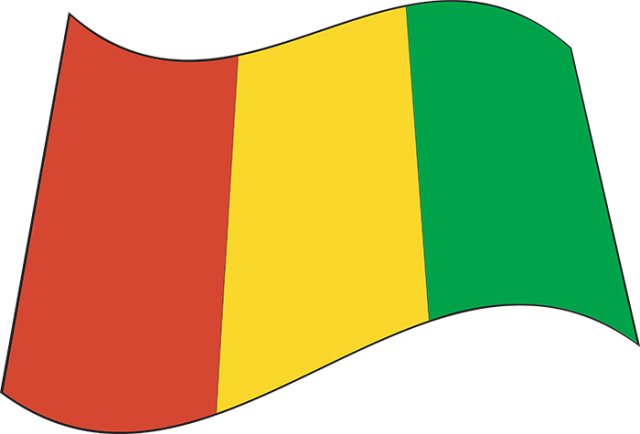
🌍 Introduction: A Land of Rivers and Rhythms
Guinea is a West African nation known for its flowing rivers, musical heritage, and rich natural resources. Though sometimes confused with nearby countries that share its name (Guinea-Bissau and Equatorial Guinea), this Guinea is officially called the Republic of Guinea.
From the highlands of Fouta Djallon to the Atlantic coast and lush forests, Guinea is a country of diverse landscapes and cultures. It is also a land of incredible music, drumming traditions, and untouched natural beauty, making it a hidden gem of Africa.
🗺️ Geography and Environment
Guinea is bordered by Guinea-Bissau, Senegal, Mali, Côte d’Ivoire, Liberia, and Sierra Leone. It also has a short coastline along the Atlantic Ocean. The country covers about 246,000 square kilometers (about 95,000 square miles).
Guinea has four main geographic regions:
The Coastal Region, home to mangroves and rice fields.
The Fouta Djallon Highlands, where many of West Africa’s rivers begin.
The Savanna Region in the northeast, with flat plains and grasslands.
The Forest Region in the southeast, with dense rainforest.
Guinea’s nickname, “Water Tower of West Africa,” comes from the fact that three major rivers—the Niger, Senegal, and Gambia Rivers—begin in its highlands.
The climate is tropical, with a rainy season (May to October) and a dry season. The country supports wildlife such as chimpanzees, antelope, hippos, crocodiles, and many types of birds.
🏛️ Government, Language, and Population
Guinea is a republic with a president and parliament. While Guinea has experienced political instability and military rule in the past, the country is working to build a stronger democracy.
The capital city is Conakry, located on the Atlantic coast. It’s the country’s largest city and main port, with schools, universities, and cultural centers.
Guinea has a population of around 14 million people, with many ethnic groups, including the Fulani (Peul), Malinké, Soussou, and Kissi. These groups each have their own languages and traditions.
Although the official language is French, most people speak their native African languages in everyday life. The main religion is Islam, practiced by about 85% of the population, followed by Christianity and traditional beliefs.
The currency is the Guinean franc (GNF).
🎭 Culture and Daily Life
Guinean culture is deeply rooted in storytelling, music, drumming, and oral history. In villages and cities, djembe drums, balafons, and kora harps are played at weddings, celebrations, and festivals.
Griots—traditional storytellers and musicians—help keep history alive through music, poetry, and spoken word. Dance is also central to social life, and different regions have their own traditional steps, costumes, and rhythms.
People in Guinea live in both rural villages and urban towns. In rural areas, homes are often made of mud bricks with thatched roofs, and families grow their own food. In cities, people work in shops, schools, markets, and offices.
Common foods include rice, cassava, maize, plantains, and peanut-based sauces. Popular dishes are mafé (peanut stew), fufu, and grilled fish. Tea, especially green tea, is a symbol of hospitality and is often served in three rounds.
📜 History: Kingdoms, Colonization, and Independence
Long before colonization, Guinea was part of powerful African empires like the Ghana Empire, Mali Empire, and Songhai Empire, which controlled trade routes across West Africa.
Later, the Fouta Djallon region became an Islamic theocracy, where Fulani rulers combined religion and governance.
In the 1800s, France colonized Guinea and made it part of French West Africa. Guinea was the first African colony to say “no” to continued French rule, voting for full independence in 1958 under the leadership of Ahmed Sékou Touré.
Touré ruled for 26 years, and after his death in 1984, the country experienced military governments and political unrest. Today, Guinea continues to work toward peaceful democracy and national unity.
💰 Economy and Resources
Guinea is rich in natural resources, especially bauxite, which is used to make aluminum. The country also has gold, diamonds, iron ore, and hydroelectric power from its rivers.
Most people work in farming, growing crops like rice, cassava, corn, and groundnuts. However, agriculture is mostly at a small-scale, and many families use traditional tools.
Guinea’s economy faces challenges like limited infrastructure, poverty, and healthcare needs, but the country has potential due to its minerals and young population.
🌿 Wildlife and Natural Beauty
Guinea’s forests, highlands, and rivers make it a hotspot for biodiversity. The Mount Nimba Strict Nature Reserve, shared with Côte d’Ivoire and Liberia, is a UNESCO World Heritage Site and home to rare species like the viviparous toad and chimps that use tools.
Birds, antelope, monkeys, and reptiles can be seen in protected parks, though deforestation and mining threaten their habitats.
Eco-tourism in Guinea is small but growing, with visitors coming for mountain hikes, waterfalls, and cultural festivals.
📚 Vocabulary List
Word Definition
Bauxite A mineral used to make aluminum
Fouta Djallon A highland region where many rivers begin
Griot A West African storyteller and musician
Franc The currency of Guinea
Mafé A stew made with peanuts and vegetables
Theocracy A government run by religious leaders
Highlands Elevated land or mountains
Oral history Stories passed down by speaking, not writing
🧒 Kid-Friendly Summary
Guinea is a country in West Africa filled with rivers, forests, and music. The Gambia, Senegal, and Niger Rivers all begin here! People speak French and other African languages. Guinea is famous for its drumming, dancing, and delicious food like peanut stew and rice. Many people live in villages and grow food. Even though the country has faced challenges, it is full of natural beauty, strong traditions, and kind communities.
🎯 Interactive Quiz: What Do You Know About Guinea?
1. What is the capital of Guinea?
a) Bissau
b) Freetown
c) Conakry
d) Bamako
2. What major natural resource is Guinea known for?
a) Cocoa
b) Bauxite
c) Oil
d) Timber
3. Which important river begins in Guinea?
a) Congo River
b) Nile River
c) Niger River
d) Limpopo River
4. What language is used in schools and government in Guinea?
a) English
b) Arabic
c) French
d) Wolof
5. What is a griot?
a) A type of dance
b) A traditional storyteller and musician
c) A government leader
d) A special kind of drum
6. What is mafé?
a) A holiday
b) A mountain range
c) A peanut stew
d) A woven cloth
7. When did Guinea gain independence from France?
a) 1960
b) 1958
c) 1975
d) 1947
8. What makes the Fouta Djallon region special?
a) It’s a desert
b) It’s where many rivers start
c) It has no trees
d) It’s near a volcano


















































